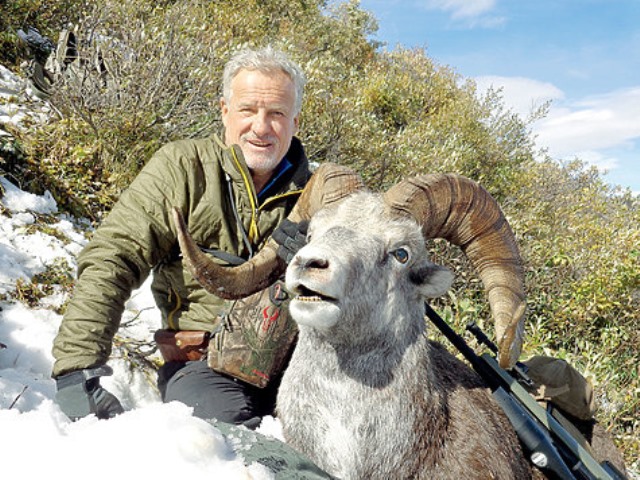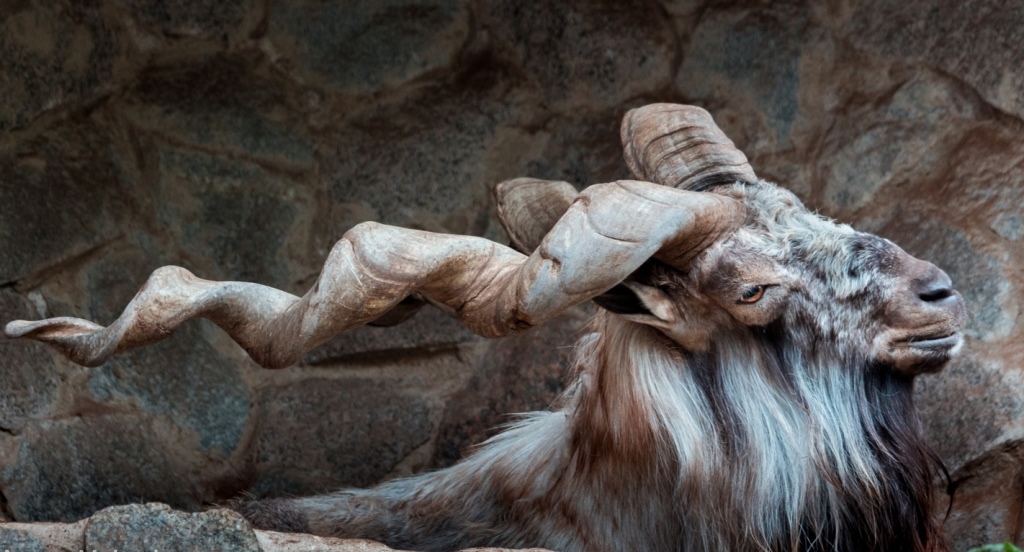The premiere of a documentary film about fate of Markhor, also known as the screw horn goat, in Tajikistan by Russian filmmaker Sergey Yastrzhembsky will be shown in April next year.
To-date, about ten reports have been filmed and the work on the documentary is expected to be finished by the end of this year, according to Yastrebfilm.
A report on production of the new documentary was shown on TV Channels Dikiyi in early spring this year.
The documentary is reportedly about a trophy hunting, “about its unconditional, but little known to the general public, beneficial effects on the conservation of wildlife and its inhabitants.to be exact.”

The markhor (Capra falconeri), is a large Capra species native to Central Asia, Karakoram and the Himalayas. It is listed on the IUCN Red List as Near Threatened since 2015.
The markhor is also known as the screw horn goat.
The colloquial name is thought by some to be derived from the Persian word mâr ('snake') and khor ('eater'), which is sometimes interpreted to either represent the species' ability to kill snakes, or as a reference to its corkscrewing horns, which are somewhat reminiscent of coiling snakes.
According to folklore, the markhor has the ability to kill a snake. Thereafter, while chewing the cud, a foam-like substance comes out of its mouth which drops on the ground and dries. This foam-like substance is sought after by the local people, who believe it is useful in extracting the poison from snakebites.
Markhor stand 65 to 115 centimeters at the shoulder, 132 to 186 centimeters in length and weigh from 32 to 110 kilograms. They have the highest maximum shoulder height among the species in the genus Capra, but is surpassed in length and weight by the Siberian ibex. The coat is of a grizzled, light brown to black color, and is smooth and short in summer, while growing longer and thicker in winter. The fur of the lower legs is black and white. Markhor are sexually dimorphic, with males having longer hair on the chin, throat, chest and shanks. Females are redder in color, with shorter hair, a short black beard, and are maneless. Both sexes have tightly curled, corkscrew-like horns, which close together at the head, but spread upwards toward the tips. The horns of males can grow up to 160 cm long, and up to 25 cm in females.
Markhor are adapted to mountainous terrain, and can be found between 600 and 3,600 meters in elevation. They typically inhabit scrub forests made up primarily of oaks, pines, and junipers. They are diurnal, and are mainly active in the early morning and late afternoon. Their diets shift seasonally: in the spring and summer periods they graze, but turn to browsing in winter, sometimes standing on their hind legs to reach high branches. Markhor live in flocks, usually numbering nine animals, composed of adult females and their young.
In the last 150 years multiple subspecies have been recognized: Astor or Astore markhor (Capra falconeri falconeri); Bukharan markhor (Capra falconeri heptneri); Kabul markhor (Capra falconeri megaceros); Kashmir markhor (Capra falconeri cashmiriensis); and Suleiman markhor (Capra falconeri jerdoni).
Although the Bukharan markhor or Tajik markhor formerly lived in most of the mountains stretching along the north banks of the Upper Amu Darya and the Panj Rivers, two to three scattered populations now occur in a greatly reduced distribution. This subspecies may possibly exist in the Darwaz district of Afghanistan’s Badakhshan province bordering Tajikistan. Before 1979, almost nothing was known of this subspecies or its distribution in Afghanistan, and no new information has been developed in Afghanistan since that time.







